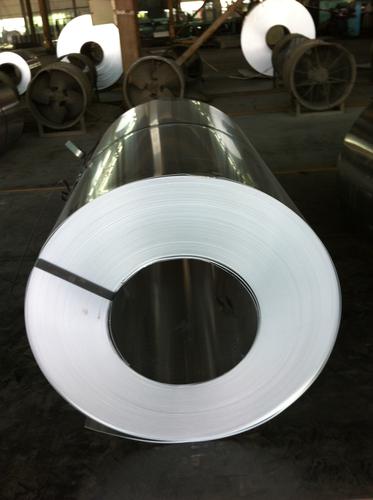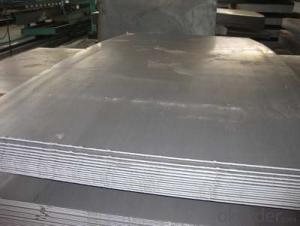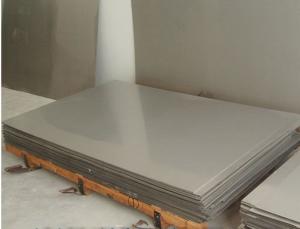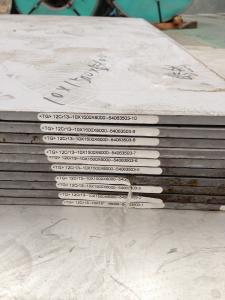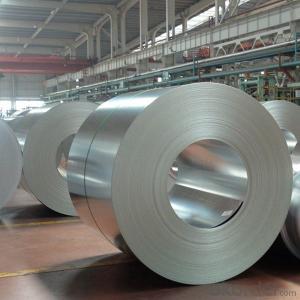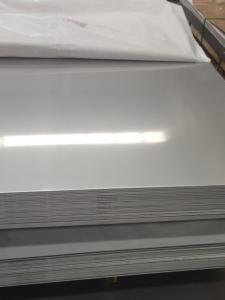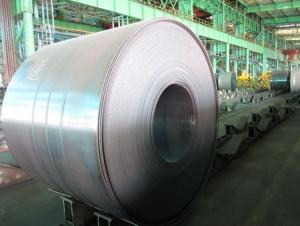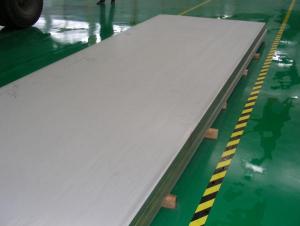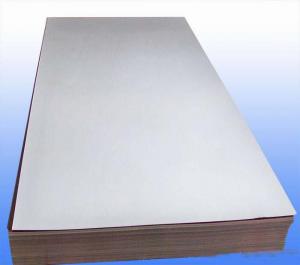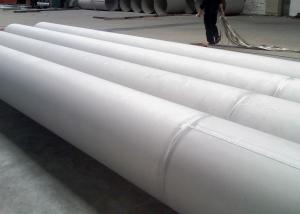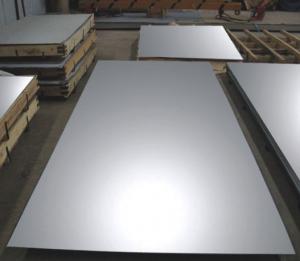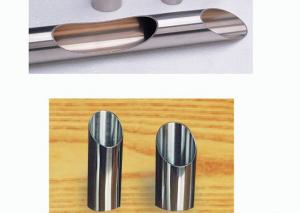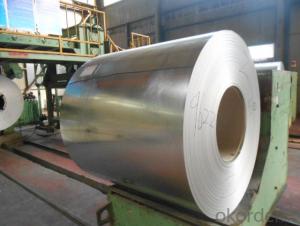Stainless Steel Sheet With Cold Rolled Grade Best Selling
- Loading Port:
- Shanghai
- Payment Terms:
- TT or LC
- Min Order Qty:
- 1 m.t.
- Supply Capability:
- 2000 m.t./month
OKorder Service Pledge
OKorder Financial Service
You Might Also Like
1.Structure of Product Description
hot rolled and Cold rolled Stainless steel sheet is widely used in the field of construction field and decoration field, etc. There are many different grades, such as: 200 series, 300 series, 400 series, 900series, etc. The grade are as follows: 201, 202, 301, 304, 316, 410, 420, 430, etc.
The surface is including 2B, BA, Mirror Finish, Checkered, etc.
2. Main features of the product
a. Competitive price
c. Shortest service.
3. Image.
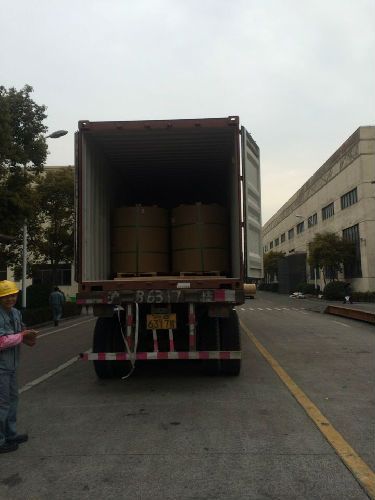
4. Product detailed sizes:
1000mm*2000mm, 1000*1000mm,1200mm*1200mm,
1219mm*2438mm,1220mm*2440mm,1500mm*3000mm,etc.
5. FAQ:
What is the quality standard?
---Usually our standard is GB3880-2006 or else.
What is the width range?
---It is from 500mm to 2500mm, etc.
What is the length range?
---It is from 2000mm to 6000mm, etc.
What is the MOQ for your products yet?
---Normally it is around 3 tons/each size.
How many tons did you export in one year?
---Normally it is around 9000 tons totally.
Where is your client from?
---Normally it is from VIETNAM,ENGLAND,CANADA,BANGLADESH,SINGAPORE, ETC.
What is your mainly products?
---Normally they are stainless steel sheet, stainless steel coil, our price is very competitiver, and we also have some stocks in warehouse now,
stainless steel checkered sheet, stainless steel mirror finished sheet, color coated stainless steel sheet, etc.
- Q: What are the factors to consider when selecting the right grade of stainless steel sheet?
- There are several considerations to keep in mind when choosing the appropriate grade of stainless steel sheet. Firstly, it is crucial to understand the intended application of the sheet. Different grades of stainless steel offer varying levels of corrosion resistance, strength, and temperature resistance. Therefore, it is important to assess the specific requirements of the application, such as exposure to corrosive environments or high temperatures. Additionally, the desired appearance and finish of the sheet should be taken into account. Some grades of stainless steel are more suitable for achieving a polished or mirror-like finish, while others are better suited for a brushed or matte appearance. Certain grades may also be more resistant to scratching or showing fingerprints, which is important in applications where aesthetics are a priority. Cost is another significant factor to consider. Prices for different grades of stainless steel can vary significantly, depending on factors such as the alloying elements used and the manufacturing process. It is essential to strike a balance between the desired properties and performance of the sheet and the available budget. The ease of fabrication and welding is also a critical factor. Some grades of stainless steel are more easily machinable and formable, making them better suited for certain fabrication processes. Similarly, certain grades have better weldability, which is important in applications where welding is required. Lastly, the availability and sourcing of the selected grade should be considered. Certain grades of stainless steel may be more readily available in specific regions or from certain suppliers. Ensuring that the selected grade can be easily sourced is important to avoid delays or increased costs in the supply chain. In conclusion, when choosing the appropriate grade of stainless steel sheet, careful consideration should be given to factors such as the intended application, desired appearance, cost, ease of fabrication and welding, and availability. By evaluating these factors, one can make an informed decision and select the most suitable grade of stainless steel sheet for their specific requirements.
- Q: Are stainless steel sheets resistant to organic acids?
- Yes, stainless steel sheets are generally resistant to organic acids. Stainless steel is known for its corrosion resistance, and this property extends to its ability to withstand the effects of organic acids. However, the level of resistance can vary depending on the specific composition of the stainless steel and the concentration and type of organic acid being used. In some cases, certain organic acids may cause localized corrosion or pitting on the surface of stainless steel, but overall, stainless steel is considered a suitable material for handling organic acids in various industries such as chemical processing, pharmaceuticals, and food production. It is always recommended to consult with experts or refer to specific stainless steel grades and their compatibility with different organic acids to ensure optimal resistance.
- Q: What are the different types of stainless steel sheet finishes for architectural applications?
- There are several different types of stainless steel sheet finishes that are commonly used in architectural applications. These finishes are applied to the surface of the stainless steel sheet to enhance its appearance and provide additional protection against corrosion and wear. 1. No. 1 Finish: This is the most common type of stainless steel sheet finish. It is also known as "hot rolled annealed and pickled" finish. In this finish, the stainless steel sheet is hot rolled, resulting in a dull, rough surface. It is then annealed and pickled to remove any scale or impurities, leaving a clean, uniform surface. 2. No. 2B Finish: This finish is achieved by cold rolling the stainless steel sheet after it has been annealed and pickled. It results in a smooth, reflective surface with a slight grainy texture. No. 2B finish is commonly used for applications that require a high level of corrosion resistance and a polished appearance. 3. No. 4 Finish: Also known as "brushed finish," No. 4 finish is achieved by mechanically polishing the stainless steel sheet with abrasive belts or brushes. It creates a satin-like appearance with fine parallel lines. No. 4 finish is often used for decorative purposes in architectural applications such as wall panels, elevator interiors, and column covers. 4. No. 8 Mirror Finish: This finish is achieved by mechanically polishing the stainless steel sheet to a highly reflective mirror-like surface. It provides a bright, reflective appearance and is commonly used for decorative applications such as wall cladding, signage, and decorative trim. 5. Bead Blasted Finish: In this finish, the stainless steel sheet is blasted with fine glass beads to create a textured, matte surface. Bead blasted finish offers a unique aesthetic and is often used in applications where a non-reflective, tactile surface is desired, such as elevator doors, handrails, and countertops. 6. Patterned Finish: Patterned finishes are achieved by embossing or etching the stainless steel sheet with various patterns or textures. This creates a decorative surface that adds visual interest to architectural applications. Patterned finishes are commonly used for wall panels, ceiling tiles, and decorative screens. These are just a few of the most common stainless steel sheet finishes used in architectural applications. Each finish offers its own unique aesthetic and functional characteristics, allowing architects and designers to choose the most suitable finish for their specific project requirements.
- Q: Are stainless steel sheets suitable for outdoor signage?
- Yes, stainless steel sheets are suitable for outdoor signage. Stainless steel is a popular choice for outdoor applications due to its durability, corrosion resistance, and aesthetic appeal. It is highly resistant to rust and can withstand harsh weather conditions, making it ideal for outdoor signage that needs to withstand exposure to rain, sunlight, and extreme temperatures. Additionally, stainless steel sheets can be easily customized and fabricated to create various designs and shapes, making it a versatile material for outdoor signage. Its sleek and polished finish also adds a professional and modern look to any signage. Overall, stainless steel sheets are a reliable and long-lasting option for outdoor signage.
- Q: How do I prevent warping on stainless steel sheets?
- To prevent warping on stainless steel sheets, it is important to ensure proper handling and storage practices. Avoid placing heavy objects on top of the sheets, as this can cause them to bend or warp. Additionally, store the sheets in a clean and dry environment to prevent moisture absorption, which can also lead to warping.
- Q: Are stainless steel sheets suitable for escalator claddings?
- Indeed, escalator claddings can be effectively adorned with stainless steel sheets. With its durability and resistance to corrosion, stainless steel emerges as an exceptional option for heavily frequented zones such as escalators. Moreover, its effortless cleaning and maintenance are of utmost significance in public areas. Furthermore, stainless steel's sleek and contemporary appearance has the potential to elevate the overall aesthetic of the escalator.
- Q: How do you remove water stains from stainless steel sheets?
- To remove water stains from stainless steel sheets, you can try using vinegar or lemon juice. Apply either of these ingredients onto the stained area, let it sit for a few minutes, and then gently rub the stain with a soft cloth or sponge. Rinse the area with water and dry it thoroughly. If the stain persists, you can also consider using a stainless steel cleaner specifically designed for removing water stains.
- Q: What is stainless steel AB board, please?
- It should be said that BA (Bright, Annealing, bright annealing) plate, and 2B plate difference is that annealing process is different, 2B using annealing and pickling combination process, BA using hydrogen protection, annealing under anaerobic environment. The rolling process and leveling process of the two surfaces are also different.
- Q: How do stainless steel sheets compare to other materials, such as aluminum or carbon steel?
- Stainless steel sheets offer distinct advantages when compared to other materials like aluminum or carbon steel. They have superior corrosion resistance, making them ideal for applications in harsh environments or industries like food processing. Stainless steel sheets also possess high heat resistance, strength, and durability, making them suitable for various structural and industrial purposes. While aluminum is lightweight and has good conductivity, it lacks the same level of strength and corrosion resistance. Carbon steel, on the other hand, is strong but more susceptible to corrosion. Overall, stainless steel sheets provide a balance of strength, durability, and corrosion resistance, making them a preferred choice in many industries.
- Q: Stainless steel thermos cup 304 and 201 material what is the difference?
- 304 stainless steel prices higher: in terms of price, 304 is far higher than the price of 201. Because 304 quality is better than 201 stainless steel, and 304 for imported stainless steel plate, 201 for domestic stainless steel plate, so 304 of the price is naturally higher.
Send your message to us
Stainless Steel Sheet With Cold Rolled Grade Best Selling
- Loading Port:
- Shanghai
- Payment Terms:
- TT or LC
- Min Order Qty:
- 1 m.t.
- Supply Capability:
- 2000 m.t./month
OKorder Service Pledge
OKorder Financial Service
Similar products
Hot products
Hot Searches
Related keywords



